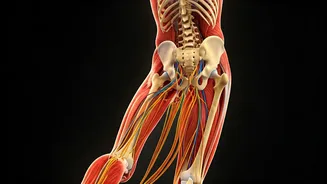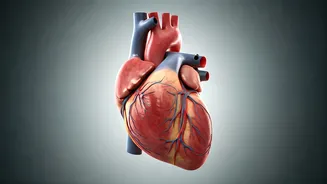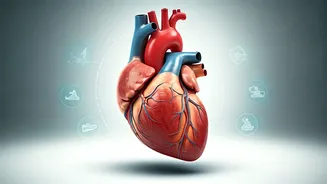Energy Expenditure Explored
For years, the scientific community has been debating the intricacies of how our bodies manage energy when we become more active. The central question
has revolved around whether the body operates on a fixed energy budget, redirecting resources, or if it can expand its energy expenditure to accommodate increased activity. This study, published in the _Proceedings of the National Academy of Sciences_, sought to clarify this, focusing on how physical activity influences the body's overall "energy budget", the allocation of energy across biological processes. The research team from Virginia Tech, the University of Aberdeen, and Shenzhen University, aimed to determine whether an increase in physical activity led to a proportional increase in energy expenditure, or if the body compensated by reducing energy spent in other functions. The results offer fresh insights into how our bodies respond to movement and the implications for our health and fitness.
Study Methodology Unveiled
To investigate, researchers measured the total energy expenditure, also known as the total calories burned in a day, of 75 participants aged between 19 and 63. Participants showed a varied range of physical activity levels, going from sedentary individuals to ultra-endurance runners. The scientists used a sophisticated method. Participants were instructed to consume isotopes of oxygen and hydrogen. Their urine samples were then collected over a two-week period. The oxygen, released as water and carbon dioxide, and the hydrogen, eliminated only as water, allowed researchers to calculate the total energy used. A small sensor, worn at the waist, recorded physical activity by measuring movement in multiple directions, adding another layer of data to the analysis. This detailed and precise methodology helped them to accurately assess how each individual's physical activity correlated to their total energy use.
Key Findings Revealed
The research revealed a significant relationship between physical activity and energy expenditure. The study indicated that more physical activity correlated directly with a higher calorie burn throughout the day, irrespective of body composition. This increase was not counteracted by the body reducing energy elsewhere, suggesting that exercise does not get cancelled out. This directly challenges the idea that the body might conserve energy in other biological processes to compensate for the calories burnt during exercise. Kristen Howard, the study’s lead author, explained that the research examined adequately fueled individuals, while Kevin Davy, the principal investigator, highlighted the key role of energy balance in their analysis. These findings provide clarity on the interaction between exercise and the body's energy consumption, debunking the myth that the body finds ways to compensate for the additional energy expended during physical activity.
Activity & Inactivity Link
The study also clearly showed a connection between being active and spending less time being inactive. People who are more physically active tend to spend less time in sedentary states. This direct link reinforces the importance of regular movement for overall health. The research showed that the body's energy usage remains stable during basic functions such as breathing, blood circulation, and temperature regulation, regardless of activity levels. The body doesn't automatically compensate for the calories used through activity, implying that any additional calories burnt through exercise translate to an increased daily energy expenditure. These results highlight the holistic benefits of exercise and the importance of integrating activity into daily life. The study encourages a deeper exploration of how our bodies respond to movement and its impact on energy balance.
Future Research Directions
While the study's findings are significant, the researchers emphasized the need for further exploration. Kevin Davy noted that additional studies are required to better comprehend the conditions and the specific groups in which energy compensation might occur. The researchers acknowledge that although their findings appear to confirm the additive model, more work is needed in this area. There is still much to understand about individual variations and factors that may influence how energy is managed during exercise. The impact of physical activity is understood to continue long after the workout ends. This understanding supports further research to fully uncover the complex relationship between physical activity, energy expenditure, and overall health. Continued investigation in this area will help to clarify any nuances and optimize fitness strategies.













